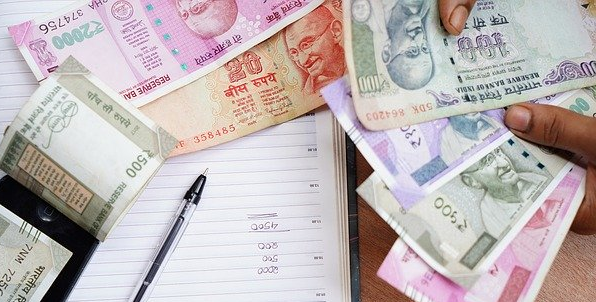
Securing ‘Direct’ Welfare in a Pandemic
22 April 2020
The Government of India last month promised a Rs 1.7 lakh crore relief package to weaken the blow from COVID-19. Direct Benefit Transfers (DBT) will be the mainstay mechanism of Pradhan Mantri Gareeb Kalyan Yojana’s disbursal announced as part of the package. As per a tweet by the Ministry of Finance on 19th April, over Rs 9,930 crore has already been deposited in the bank accounts of about 20 crore women beneficiaries. Yet, with the Coronavirus pandemic placing severe restrictions on people’s movement, and overstretching the administrative machinery, the DBT machinery is likely to be tested. We explore the challenge of intended beneficiaries being able to safely access funds.
A look at the DBT mechanism reveals its usefulness. Launched in 2013, DBT is new relative to other longstanding welfare programmes and appears innovative in its use of e-governance measures. DBT transfers are usually in cash, in-kind or are in other forms such as honorariums and incentives (we will focus on cash-based transfers). As per the government’s website, in FY 2019-20, 427 schemes under 56 ministries made use of DBT (full list here). The quantum of funds transferred was Rs 2.6 lakh crores via more than 400 crore transactions [1]. In the period of the country-wide lockdown, over Rs 36,600 crore has been transferred (from 24 March-17 April 2020).
DBT has been supported by both physical and technological mechanisms called ‘enablers’. The bulk of processes for cash transfers to the accounts of the eligible are digitised through the use of the Public Financial Management System (the standard operating procedure can be found here). However, while the transfer of money to the beneficiaries’ account is digital, the penultimate aim to ensure cash-in-hand is not. This is heavily dependent on at least two physical enablers: banks/ATMs/postal offices, and Bank Correspondents.
With the Coronavirus pandemic, both have to observe strict hygiene measures and guidelines, which is proving to be difficult. For example, the first installment (of Rs 500 for a total of Rs 1,500 split across three months) was transferred to about 20 crore women Jan Dhan account holders in early April. A pernicious effect of the Coronavirus crisis has been fear, and rumours on money meant for beneficiaries being returned or blocked led to anxious beneficiaries flouting physical distancing norms to withdraw funds. This was after the Department of Finance had reinforced the need to adhere to strict guidelines of maintaining distance, and measures such as staggering customer arrival [2].
Thus, DBT’s operational difficulties at the last mile have the potential to reverse gains made on health protection through its use.
An alternative could have been DBT’s Bank Correspondents (also called Bank Mitras or Business Correspondents), particularly for beneficiaries who may not not be as mobile to travel or could be at higher risk of contracting COVID-19. Among them are senior citizens and people with disabilities for whom the Union government’s relief package mentions a one-time-payment of Rs. 1,000. As restriction on movement during the lockdown reduces the regular maintenance of cash supplies, especially in rural areas, the responsibility of turning monetary benefits to actual cash-in-hand has also fallen upon the estimated 1.2 lakh Bank Mitras [3]. These outsourced banking agents function as micro-mobile-ATMs allowing customers to withdraw money. However, they are facing several obstacles.
Despite their services being classified as essential, reports suggest that they continue to face restrictions in movement and threat to personal security. Moreover, they rely on link bank branches but these branches are themselves rationing cash due to low availability [4]. According to one estimate [5], only 30 per cent of the Bank Mitras are functioning in rural areas, many of whom have little incentive. This is why the Business Correspondent Federation of India (BCFI) has suggested relief measures of up to Rs. 5,000 for three months for the Bank Correspondents to compensate them for working under precarity [6]. To address the issue, public banks such as Bank of Baroda have announced a transfer of Rs. 2,000 to each active and functional Bank Mitra for the purchase of personal protective equipment such as sanitisers, masks and gloves. They have also added a conditional Rs. 100 per day incentive to active Bank Mitras [7].
But, for Bank Mitras to be the true connect at doorstep, the government will have to install a comprehensive plan for them.
In an extraordinary time such as what the country faces right now, re-engineering the system to match the crisis is urgent. Till then, as we also explore exclusion of potential beneficiaries in part two of this series, it might yet be early to treat DBT as a one-size-fits-all policy solution.
(1) Direct Benefit Transfers dashboard. Available here. Last accessed: 21 April 2020.
(2) “DBT under PMGKY: Home Secretary directs strict compliance of DFS guidelines” published in Hindu Business Line on 3 April 2020. Last accessed: 21 April 2020. Available here.
(3) Tweet is available here.
(4) “Business correspondents highlight shortage of cash in rural areas, travel difficulties amid lockdown” published in Hindu Business Line on 27 March 2020. Last accessed: 21 April 2020. Available here.
(5) “Coronavirus: Relief package for the poor via DBT may face hurdles” published in The Economic Times on 30 March 2020. Last accessed: 9 April 2020. Available here.
(6) “Finance Minister to talk to States to ensure Bank mitras can move without restrictions during lockdown” published in Hindu Business Line on 27 March 2020. Last accessed: 21 April 2020. Available here.
(7) “Business correspondents highlight shortage of cash in rural areas, travel difficulties amid lockdown” published in Hindu Business Line on 27 March 2020. Last accessed: 21 April 2020. Available here.






IN MY OPINION INTEREST REDUCTION ON EPF, PPF, SMALL SAVINGS WHICH IS 7.35% PER ANNUM IS VERY MUCH NEEDED IN INDIA TO SAVE INDUSTRIES, JOBS AND CONSUMERS NO SALES NO WORK AND HAVE TO PAY INTEREST ON LOANS TO BANKS. BANK LENDING RATES ARE VERY HIGH IN INDIA NO ONE IS TAKING LOAN FROM BANKS NOW ALL BANKS CASH IS PARKED IN REVERSE REPO WITH RBI PLZ SOMEONE WRITE A ARTICLE ON THIS ISSUE HIGH INTEREST RATES KILLING INDUSTRIES, JOBS, MIDDLE CLASS AND POORS.